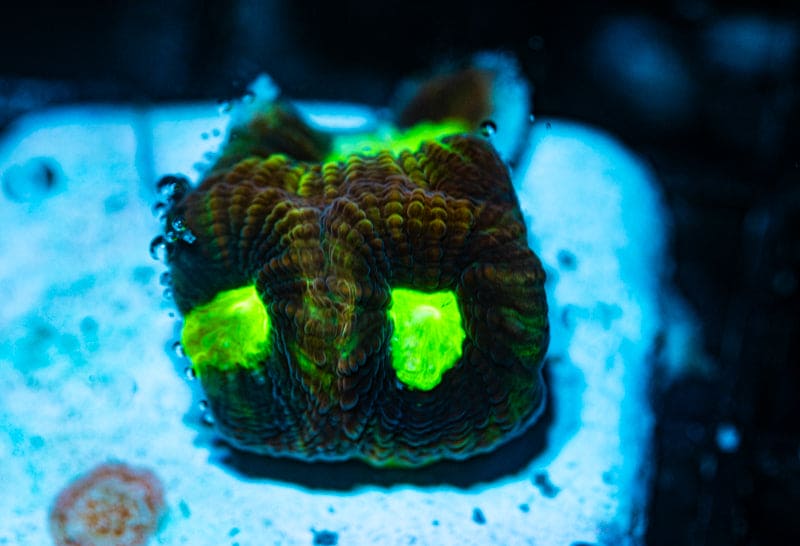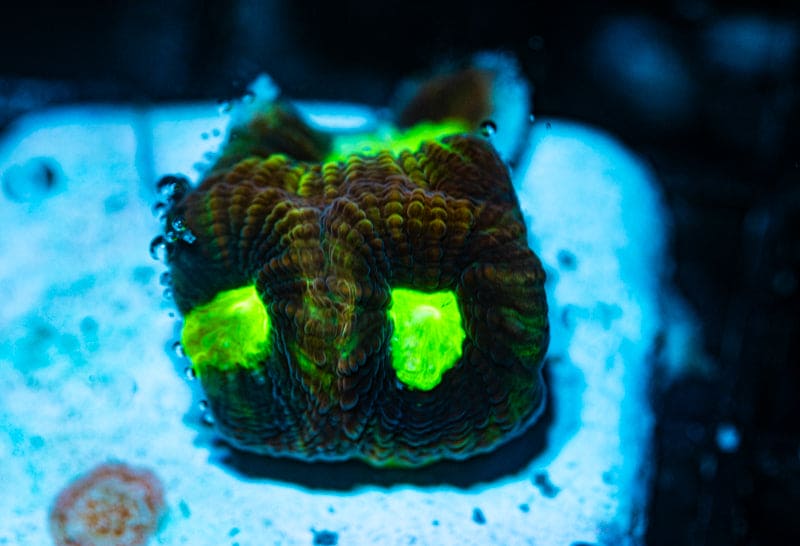Koralkingdom.com
Dragon Soul Favia Frag
Dragon Soul Favia Frag
Save an additional 10% with a subscription below
Couldn't load pickup availability
Share
War corals, also known as Acanthastrea, are a captivating genus of stony corals that have gained popularity among reef aquarium enthusiasts. Their bold colors, unique patterns, and hardy nature make them an excellent choice for both beginner and experienced aquarists. In this blog, we'll explore the allure of war corals and provide insights into their care requirements, propagation, and placement in home aquariums.
Unveiling the Beauty of War Corals:
War corals belong to the family Mussidae and are renowned for their robust skeletal structures and distinctive corallite patterns. They come in a stunning array of colors, including shades of red, orange, green, blue, and purple, often with contrasting hues and intricate patterns that resemble camouflage or battle scars, hence the name "war corals." These corals typically have large polyps that extend during feeding, adding movement and vitality to the reef aquarium.
Care Requirements:
Maintaining optimal conditions for war corals is essential for their health and vibrancy. Here are some key care requirements to consider:
1. Water Parameters: War corals thrive in stable water conditions. Keep temperature between 75-80°F (24-27°C), salinity at 1.024-1.026, pH between 8.1-8.4, and alkalinity (dKH) between 8-10. Regular water testing and adjustments are crucial for maintaining water quality.
2. Lighting: Moderate to low lighting is suitable for most war corals, as excessive light can cause tissue damage or bleaching. LED lighting with adjustable intensity and spectrum control allows you to customize the lighting to meet the needs of your corals.
3. Water Flow: Gentle to moderate water flow is ideal for war corals. Position them in areas of the aquarium where water movement is sufficient to promote nutrient exchange and waste removal without causing excessive stress to the coral polyps.
4. Feeding: While war corals primarily obtain nutrients through photosynthesis, they can also benefit from supplemental feeding. Offer small, meaty foods such as mysis shrimp, brine shrimp, or specialized coral foods to enhance their growth and coloration.
Placement:
When placing war corals in your aquarium, consider their placement preferences:
1. War corals can be placed on the substrate or attached to rockwork using reef-safe glue or epoxy.
2. Provide adequate spacing between war coral colonies and other corals to prevent territorial disputes and allow for proper water flow around each specimen.
3. Avoid placing war corals in direct contact with aggressive or stinging corals, as they may engage in territorial behavior.
Propagation:
War corals can be propagated through fragmentation, similar to other coral species. Using sharp coral cutters, carefully frag a portion of the coral colony and attach it to a frag plug or rock surface using reef-safe glue or epoxy. Provide optimal water flow and lighting to facilitate healing and encourage new growth in the fragged coral.
War corals captivate aquarists with their bold colors, intricate patterns, and hardy nature. By providing stable water conditions, appropriate lighting, and careful placement, you can enjoy the beauty of war corals in your own home aquarium. With their striking appearance and dynamic polyp extension, war corals are sure to become cherished inhabitants of your underwater sanctuary, bringing excitement and vibrancy to viewers and enriching the dynamic ecosystem of your aquatic environment.


